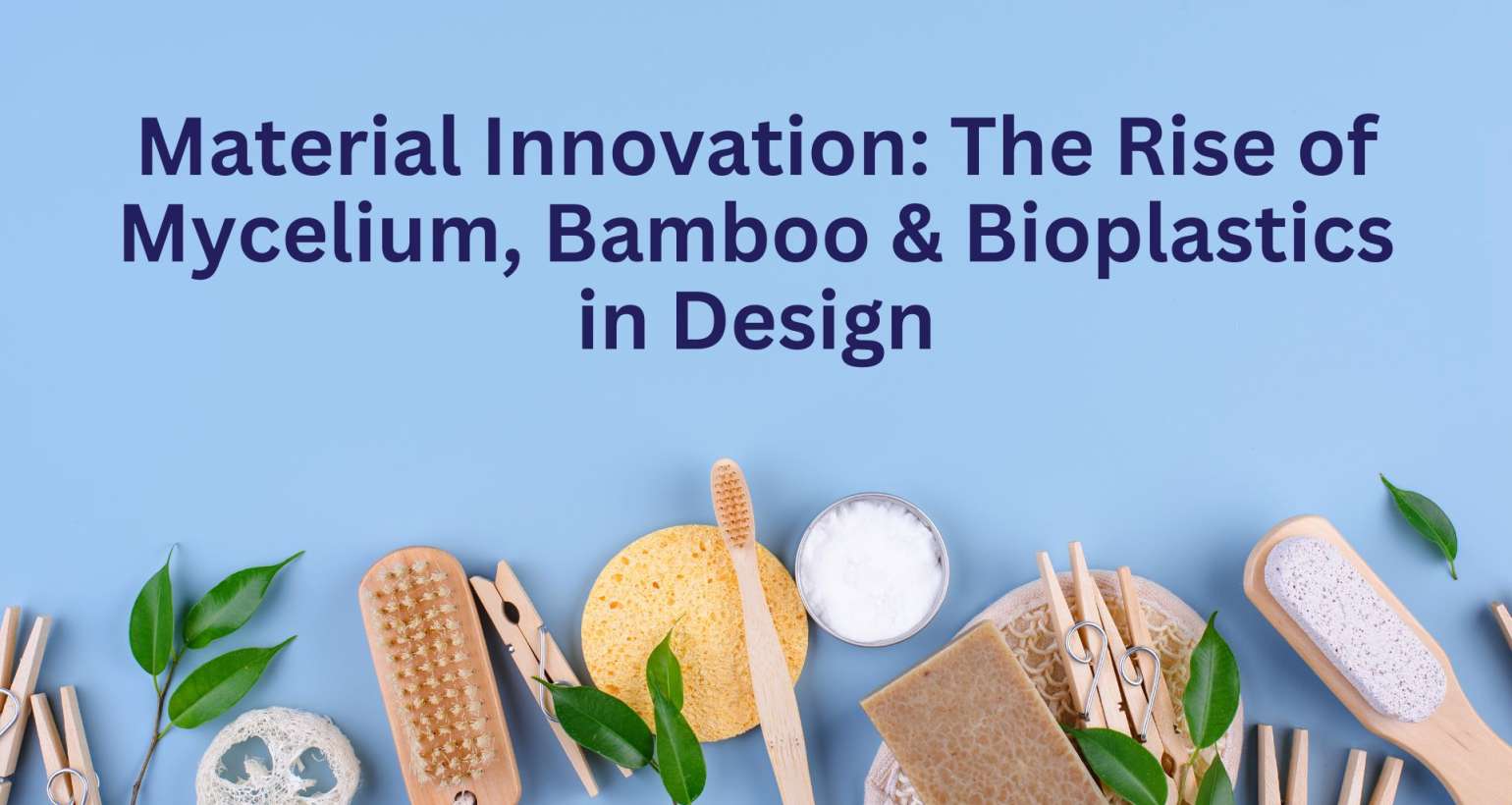The design industry is undergoing a revolutionary shift towards sustainability, with the adoption of biodegradable and regenerative materials reshaping product and interior design. Mycelium, bamboo, and bio-plastics are at the forefront of this movement, offering innovative solutions that align with environmental goals.
Mycelium: From Fungi to Functional Design
Mycelium, the root structure of fungi, is gaining recognition for its potential in sustainable design. Researchers at IIT Madras have developed biodegradable packaging materials using agricultural waste and mycelium composites, demonstrating superior mechanical strength compared to traditional plastic foams. This innovation addresses both plastic pollution and agricultural waste management by converting residues into compostable packaging solutions.
In architecture, mycelium-based materials are being explored for their lightweight and insulating properties. Structures like the Hy-Fi tower in New York showcase the potential of mycelium as a building material, offering a glimpse into a future where buildings are constructed from biodegradable components.
Bamboo: The Versatile and Sustainable Material
Bamboo’s rapid growth and minimal environmental impact make it an attractive alternative to traditional building materials. In construction, bamboo is being utilized for flooring, structural components, and even entire buildings. Its strength and flexibility make it suitable for both residential and commercial applications.
Designers are also incorporating bamboo into interior design, furniture, and decorative elements. The material’s aesthetic appeal, combined with its sustainability, has led to its adoption in various design projects worldwide.
Bio-Plastics: Redefining Product Design
Bio-plastics, derived from renewable plant sources, are gaining traction as sustainable alternatives to petroleum-based plastics. These materials are compostable and can be molded into various shapes, making them suitable for a wide range of design applications, including packaging and product components.
In product design, bio-plastics are being used to create durable and aesthetically pleasing items such as chairs, tables, lamps, and wearable products like shoes and bags. The incorporation of waste materials into bio-plastics adds unique textures and visuals to the surface, enhancing their appeal.
Integrating Eco-Friendly Materials into Design
The integration of eco-friendly materials into design practices is gaining momentum as sustainability becomes a priority in the industry. Designers are increasingly adopting materials like mycelium, bamboo, and bio-plastics to create products and interiors that are both functional and environmentally responsible.
Emerging trends include the use of recycled and reclaimed materials, biophilic design principles, and the incorporation of smart technologies to enhance energy efficiency. These practices not only reduce environmental impact but also promote well-being and innovation in design.
Looking ahead, the adoption of circular economy principles is expected to grow, with designers focusing on creating products that are durable, repairable, and recyclable. This approach aims to extend the lifecycle of products and reduce waste, aligning with global sustainability goals.
The Future of Sustainable Design Practices
The future of sustainable design practices is promising, with advancements in material science leading to the development of new, innovative materials that are both eco-friendly and high-performing. Transparent wood composites, for example, are being researched for their potential in energy-efficient building applications, offering a sustainable alternative to traditional glass and plastic materials.
The demand for transparency and ethical sourcing is influencing design choices, with consumers increasingly seeking products made from responsibly sourced materials. Designers are responding by prioritizing sustainability in their material selections and production processes.
As technology continues to advance, the integration of digital tools and smart technologies in design is enhancing the efficiency and effectiveness of sustainable practices. These innovations are paving the way for a more sustainable and innovative future in design.

